Introduction
One particular point about the Islamic sacred spaces is that there is no law that would mandate the rituals performed or the shape or form of the building. In other words, the Islamic religious doctrines do not determine any of the architectural choices when it comes to building a mosque. According to Waugh (2018, p. 46), the primary requirement that should be followed by all mosque architects is to create enough space for multiple rows of worshippers who would be standing behind an imam. Any other change related to the shape of the sacred space does not require approval from religious figures. Such discretionary nature of Muslim architecture was one of the main reasons why different empires tended to build mosques of varied shapes in order to stand out and make themselves noticed (Pradines 2018, p. 16). The celebration of diverse mosque designs allowed numerous Muslim empires to achieve a unique political and religious identity. The most important part about mosques is that they serve as sacred places for all Muslims, unlike Christian churches that could attract Orthodox, Catholic, or Protestant worshippers.
The current paper is intended to dwell on how the Ottoman Empire and the Mughal Empire made the best use of mosques to have them reflect symbolic values and the Muslim identity in general. Architectural decisions from both empires are going to be reviewed in detail to help identify at least one similarity and difference, respectively. The role of Muslim architecture in terms of shaping the Islamic culture is going to be discussed in rich detail. The trends in mosque architecture and religious and political identity will be outlined.
Mosques as an Essential Element of Political and Religious Identity
Ottoman Empire
One particular element that has to be noted when discussing the Ottoman Empire and its historical footprint is the willingness to follow the traditions of the Byzantine Empire. Therefore, the majority of Ottoman mosques feature classical elements that were adopted from predecessors (see Figure 1). The most important feature of Ottoman mosques was the presence of a central dome that ascended over the whole structure and covered the prayer hall. Over time, combinations with cascading half-domes and smaller domes were introduced because the central dome was constructed even larger than before.
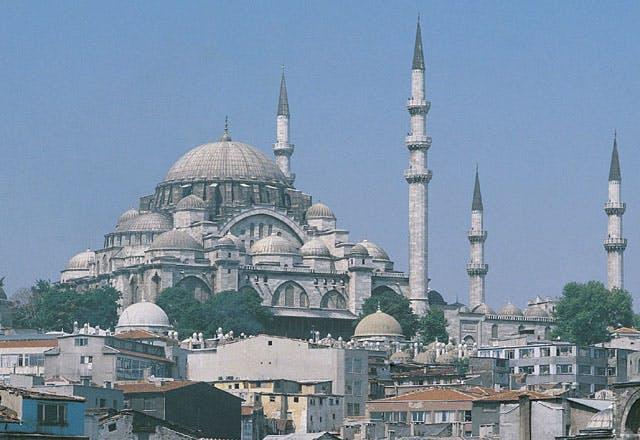
A pyramidal outline was the most common arrangement utilized in Ottoman mosques (see Figure 2). Semi-circular, flat domes are characteristic of Ottoman architecture together with the qibla wall intended to indicate the direction of Mecca.
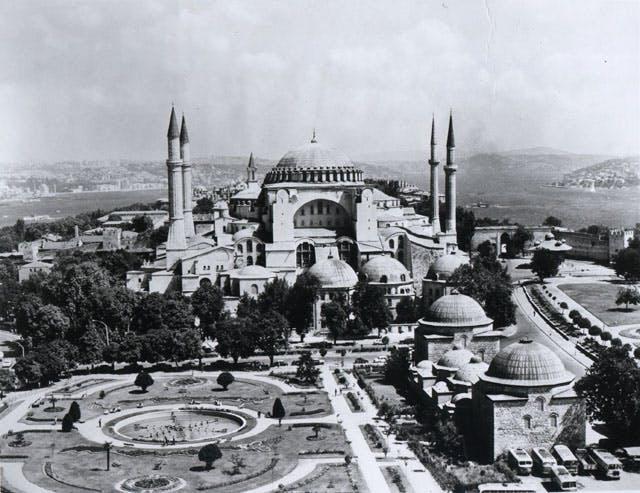
Similar to the empire itself, Ottoman religious complexes always featured numerous additional facilities. From public baths and religious schools to a soup-kitchen and the patron’s mausoleum, a variety of unique features could aid one in recognizing Ottoman mosques right away (Findley 2019, p. 179). Another indication of the cultural and political influence of the Ottoman empire was the presence of pencil-shaped minarets that could be seen almost everywhere across the geographical possessions of the Ottoman Empire. The higher number of minarets could be a sign of royal patronage, hinting at the importance of mosques for Ottoman political actions. Another distinguished element of Ottoman mosque architecture is the muqarnas (see Figure 3).
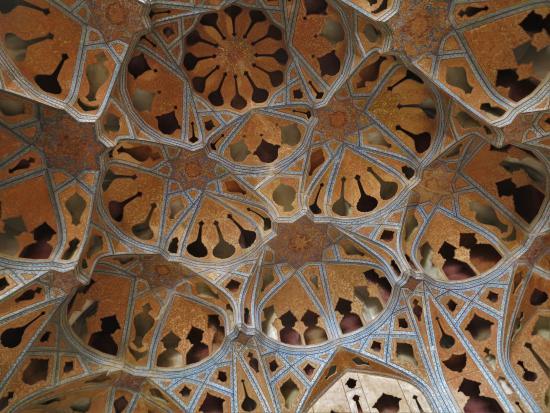
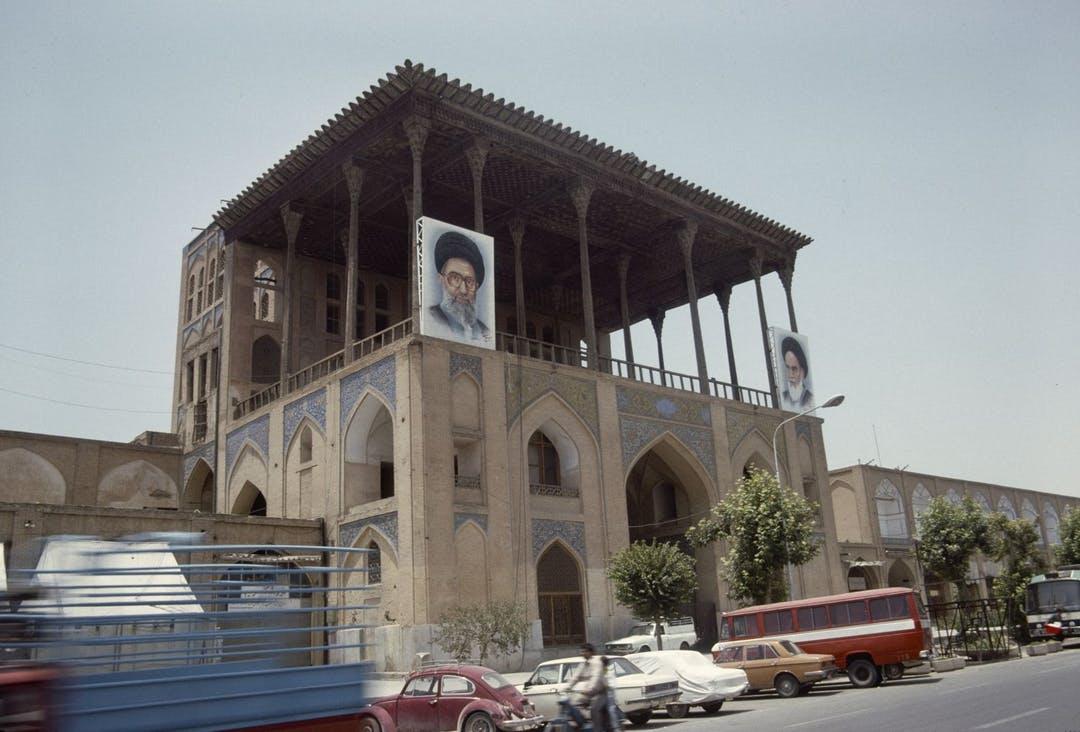
This transitional element serves the purpose of unloading the weight of the domes to the walls. Nevertheless, it could also serve as a decoration (see Figure 4) intended to improve the visual perception of the facility.

The Ottoman Empire had a complex history of relationships with other states, so its ability to capitalize on various architectural innovations was an important means of supporting the Muslim identity even outside the empire.
Mughal Empire
The spiritual value of the Mughal mosques and other architectural inventions has to be considered because of the historical uniqueness of these buildings. It can be suggested that the Mughal Empire gave birth to some of the most inspiring and beautiful mosques that could provide individuals with a place for peace (see Figure 5).
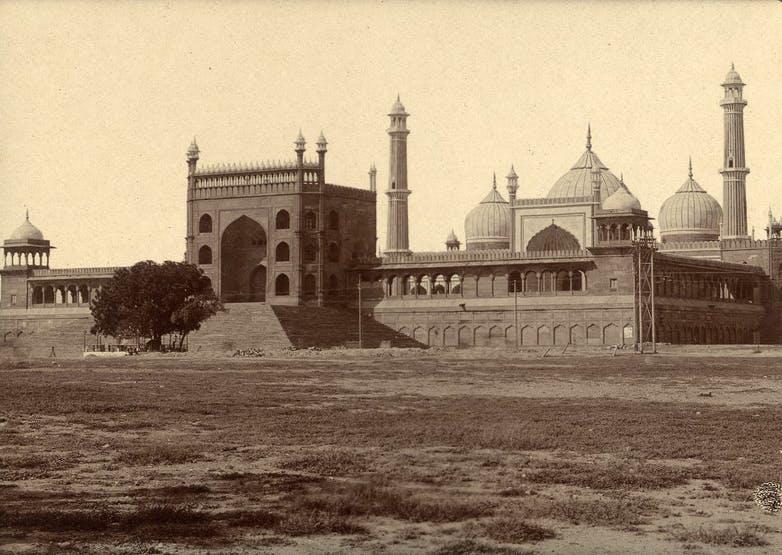
The sense of excitement was contained by the Mughals in order to create sacred places that hold certain cultural values and also represent a source of knowledge for future generations (Mahgoub et al. 2021, p. 134). With culture being so important for the Mughal Empire, it was not surprising to see Mughal Eidgah remaining one of the core pillars of Muslim identity (see Figure 6). Similar to the Ottoman Empire, the Mughals celebrated their worship of God by creating exceptional sacred places with the help of trained creators. Yet, both the political strategy and architectural choices of the Mughals hinted at their kindlier approach to non-Islamic citizens.

Generally speaking, the growth of the Mughal Empire might not have been as intense and impactful as in its Ottoman counterpart. The religious and architectural impact of the Mughals on India also became visible over time (see Figure 7). The expansion of Muslim values became the core task for contemporary politicians, as their task was to popularize Islam and ensure that all individuals recognized its value.

Hence, Mughal mosques played a specific civilization-building role that allowed local Muslims to worship God and adhere to the existing sociocultural environment. Designs offered by the Mughal architects became timeless because they went beyond being a mere sacred place. For instance, Jama Masjid in Delhi (see Figure 8) represented the importance of culture and its overall political impact.
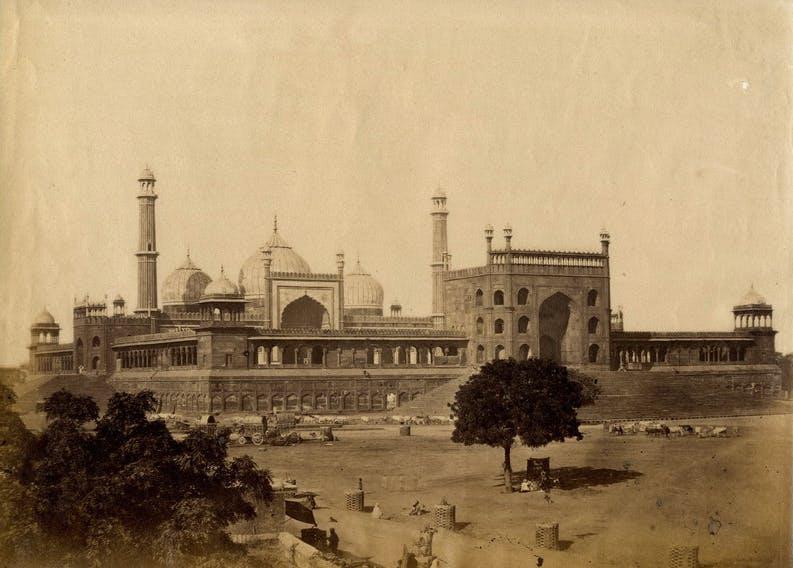
The Mughals created mosques that reflected their cultural state and appealed to worshippers through unique designs.
Conclusion
The economic and political similarities between the Ottoman Empire and the Mughal Empire were not the only resemblances affecting the Islamic culture. The particular approaches to architecture taken by the Ottomans and the Mughals were also important for an improved understanding of why political and cultural identity flourished during the best years of both empires. With the aid of mosques, architects from both empires paved the way for new decisions in sculpture, construction, and various arts. Thus, the contribution of both empires can be considered equal, as the economic and cultural development of the two states was practically identical. Despite major political disagreements, the Mughals and the Ottomans remained powerful and influential. They created a major legacy for all the Muslims across the globe who needed a sacred place to worship. The unique features of Ottoman and Mughal mosques became essential for a better understanding of why the latter could serve as an instrument of celebrating Muslim cultural and political identity. Both empires have left a considerable trace in history, making it safe to say that the Mughal Empire and the Ottoman Empire contributed to spreading Islamic values across the globe.
References
Findley, Carter Vaughn. Enlightening Europe on Islam and the Ottomans: Mouradgea d’Ohsson and His Masterpiece. Brill, 2019.
Mahgoub, Yasser, Nicola Cavalagli, Antonella Versaci, Hocine Bougdah, and Marta Serra-Permanyer, eds. Cities’ Identity through Architecture and Arts. Springer International Publishing, 2021.
Muharram Mirror. 2022. Mughal Eidgah. Web.
Pradines, Stéphane, ed. Earthen Architecture in Muslim Cultures: Historical and Anthropological Perspectives. Brill, 2018.
Waugh, Earle H. Al Rashid Mosque: Building Canadian Muslim Communities. University of Alberta, 2018.